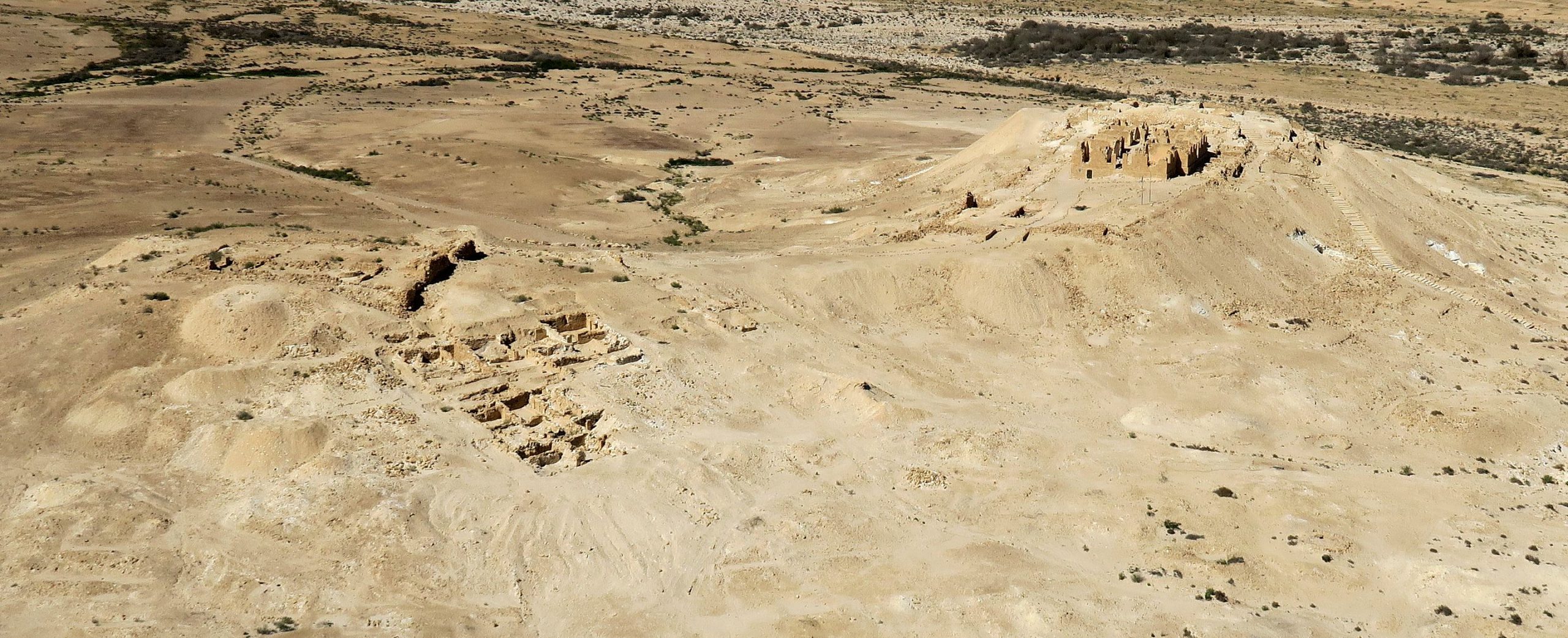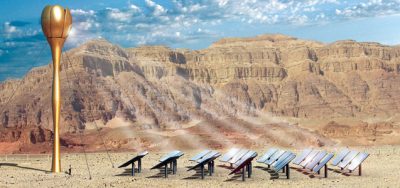Ancient Greek burial stone discovered while clearing paths for nature park in Israel’s Negev Desert reveals period of time in transition
A stone bearing an inscription in Greek from the end of the Byzantine period – around 1400 years ago – was discovered last weekend in the confines of the Nitzana National Park in the Negev Desert in Israel. The flat, round stone, about a foot in diameter, was used as a tombstone in one of the cemeteries surrounding the ancient settlement.
The stone was found by a “Project 500” worker from the Israel Parks and Nature Authority while cleaning and preparing nature paths in the Nitzana National Park. The stone was left at the head of the path when it was noticed by David Palmach, the director of the Nitzana Educational Village, who realized that it bore an inscription. Palmach photographed and collected it to prevent its being looted. He also contacted the Israel Nature and Parks Authority and the Israel Antiquities Authority, and the inscription is being transferred to the National Treasuries Dept.
The inscription was deciphered by Leah Di Segni of the Hebrew University in Jerusalem and it refers to “Blessed Maria, who lived an immaculate life” and died on February 9th.
A time of Islam conquering the region
According to Tali Erickson-Gini of the Israel Antiquities Authority, “Nitzana is renowned as a key site in research into the transition between the Byzantine and the Early Islamic periods. During the fifth and sixth centuries CE, Nitzana acted as a center for the villages and settlements in the vicinity. Among other things, it had a military fortress as well as churches, a monastery and a road station that served Christian pilgrims traveling to Santa Katarina, which believers regarded as the site of Mount Sinai.”
Mount Sinai is where Jewish believers say Moses received the 10 Commandments. Nitzana in an aerial photograph below.

According to Dr Erickson-Gini, Nitzana was founded in as early as the third century BCE as a Nabatean road station on a major trade route and the place was inhabited intermittently for about 1300 years, until it was abandoned in the tenth century CE and its name was forgotten.
Archaeological excavations at the site in the 1930s unearthed a papyrus archive, and the name ‘Nessana’ was rediscovered. The burial-stone find, naming the deceased as Maria, joins other stones commemorating Christians buried in the churches and cemeteries around Nizzana that have been unearthed in excavations by the Ben Gurion University of the Negev, among others.
Israel Antiquities Authority Southern District archaeologist Pablo Betzer says, “Unlike other ancient towns in the Negev, very little is known about the burial grounds around Nitzana. The find of any inscription such as this may improve our definition of the cemeteries’ boundaries, thus helping to reconstruct the boundaries of the settlement itself, which have not yet been ascertained.”
It’s common for archeology remnants to be uncovered by civilians in Israel. Especially in the winter time as heavy rains disturb old sands. Remember last year when a boy in Israel found the Bel Air of tombstones while out hiking?
Nitzana was Nabatean too
Nitzana (Hebrew: ניצנה; transliterated at the site as “Nizana”, Byzantine Greek Νιζάνα) is an ancient Nabataean city located in the southwest Negev desert in Israel close to the Egyptian border. It may have been a camel caravan station on the eastern branch of the ancient Incense Route, serving pilgrims and merchants travelling to Sinai or central Egypt.
Gaza built from the ruins of Nitzana
The Nabataean towns of the Negev were typically founded around the first century BC, conquered by Romans two centuries later, who garrisoned the site, and inhabited by Byzantine Christians from at latest the fourth century until the invasion and the Muslim conquest of Syria in the seventh century. Relatively few stones remain on the site because most were recycled into buildings in Gaza in the early 20th century.
We love the Nabateans because they had excellent systems for water capture and reverence for nature. And they built beautiful things like Petra.

The first people to green the desert? Nabateans who built Petra were like the Mayans of the Middle East. The ancient people were developed in agriculture, spirituality and architecture. Archaeologists dig into how they dealt with drought in Jordan, one of the driest countries on earth.




